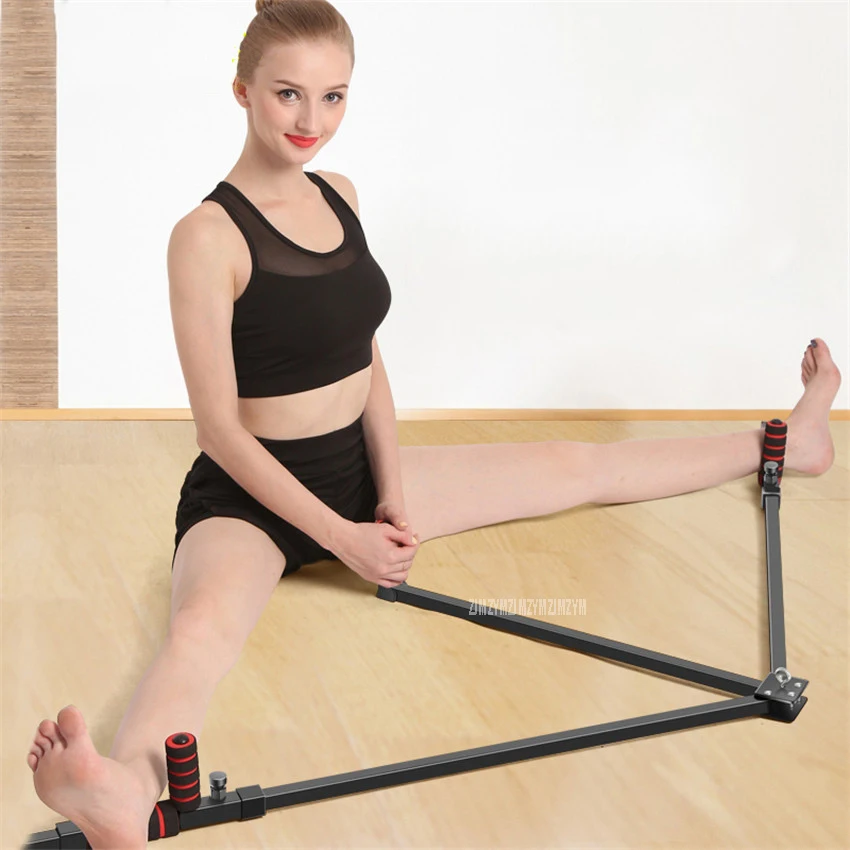How do i breathe dance
Teaching Dancers To Coordinate Breath And Movement
All dancers use breath. After all, breathing is a natural and necessary function that occurs whether we think about it or not. However, not all dancers understand how they can use their breath to maximize their dancing.
At the most basic level, dancers should use inhalation to emphasize growing movements, and exhalation to extend shrinking movements. This use of breath provides a greater fluidity of movement, musicality, and often creates an enduring quality that fosters enjoyment of movement.
Despite these benefits, young dancers are often unaware of how to connect their breath to their movement. Many tend to hold their breath, in class and on stage, because they are focusing their attention on performing the choreography above all else.
So, as dance teachers, how can we teach our students to connect their breath to their movements?
Experience has taught me that this is a quality that cannot be taught in a day, but must be fostered throughout a dancer’s development. Below are several exercises that I have found helpful in encouraging the use of breath in my students.
Begin at the Barre
Dance training often begins with ballet, and ballet begins at the barre. Therefore, it only makes sense that the incorporation of breath should start at the barre.
Every so often, use a CD of songs that are familiar to your dancers (one of my favorites is Divas for Ballet by David Plumpton). Holiday CDs also work well for this exercise. Teach your ballet class as you normally would, but invite your dancers to hum along with the music. Humming naturally incorporates breath into the exercise and the dancer becomes more closely involved with the musicality of the exercise.
Improvisational Breath Exercises
The following improvisation exercises can be done singularly at the end of a modern or contemporary class, or could be extended into a longer workshop.
Individual Exercise: Using Breath in Movement
Spread the dancers out in the space. Play soft music that the dancers can hear you speak over. Then, ask them to improvise movements while coordinating audible breathing. Encourage the dancers to experiment with the way they breathe, such as varying the speed of inhalation and exhalation, pushing air out in contrast with pulling air in, and changing the pitch of their breath sounds.
Play soft music that the dancers can hear you speak over. Then, ask them to improvise movements while coordinating audible breathing. Encourage the dancers to experiment with the way they breathe, such as varying the speed of inhalation and exhalation, pushing air out in contrast with pulling air in, and changing the pitch of their breath sounds.
Partner Exercise: Using Breath to Communicate
Pair your dancers up and spread the pairs out in the space. Again, play soft music that the dancers can hear you speak over. Then, ask the dancers to improvise movements while incorporating audible breathing in a conversation, or call and response, with a partner. One partner begins by improvising a movement that uses breath their partner can hear, and the second partner responds, also breathing out loud while improvising a movement. I like to encourage contact between the dancers during this exercise to form a more intimate connection between the pairings.
Perfecting With Performance
Challenge your dancers to breathe out loud during a rehearsal run of your piece. This will force the dancers to think about their breathing as they dance. Give them places in the choreography where they should incorporate specific breathing patterns, such as inhaling when arms or legs are lifted or at the initiation of a jump, and exhaling at the beginning and end of a turn or during the landing of a jump. After the run has concluded, allow the dancers time to process their experience individually.
This will force the dancers to think about their breathing as they dance. Give them places in the choreography where they should incorporate specific breathing patterns, such as inhaling when arms or legs are lifted or at the initiation of a jump, and exhaling at the beginning and end of a turn or during the landing of a jump. After the run has concluded, allow the dancers time to process their experience individually.
Encourage Experimentation
While the structure described in the rehearsal example above provides a great starting point for dancers to explore the connection of breath to movement, it is important to not always apply such a rigid arrangement for breathing. Every body is different, and every dancer will find that a different, specific breathing pattern assists his or her technique and performance.
Once a dancer understands the basic principles of using breath with movement, he or she can master this on his or her own body through discovery and experimentation. Ultimately, this process will lead to a deeper understanding and enjoyment of the dance.
Ultimately, this process will lead to a deeper understanding and enjoyment of the dance.
Kindly follow, like or share:
Chelsey Bradley
Chelsey Bradley is a choreographer, professor, and author. She completed her Master’s Degree in Dance and Choreography in 2017 from the Peck School of the Arts, and then served as a lecturer of dance for the University of Wisconsin, Eau Claire. She currently serves as resident choreographer for Dance Wisconsin, and teaches modern dance for Monona Academy of Dance. Her work for these companies has earned her Regional Dance America’s National Choreographic Commissioning award four times, Regional Dance America’s Choreography Connection Grant in 2014, and a Choreographic Honors Award from the University of Wisconsin, Madison, in 2015. Read Chelsey’s posts.
These 5 Breathing Tips Will Transform Your Dancing
If a teacher or choreographer has ever commented that your dancing looks stiff, the problem could be that you aren’t breathing effectively. “When dancers aren’t breathing, their shoulders are up and there’s no length in their movement. They start to look like they’re just waiting to get to the next thing,” says Maria Bai, artistic director of Central Park Dance in New York.
“When dancers aren’t breathing, their shoulders are up and there’s no length in their movement. They start to look like they’re just waiting to get to the next thing,” says Maria Bai, artistic director of Central Park Dance in New York.
It may seem like a no-brainer—of course you can’t move without breathing. But beginning dancers often hold their breath because they are so focused on picking up choreography, says Sarah Skaggs, director of dance at Dickinson College. Even advanced dancers can benefit from focusing more on their breath. “Sometimes they are paying so much attention to what their limbs are doing that they forget about the lungs, the chest, the trunk. Breath is the last thing they’re thinking about, but really it should be the first,” says Skaggs. The more integrated your breathing is, the more relaxed and present you will feel.
Practice Breath Integration
Yoga and Pilates can help you link breath to movement. Photo by rawpixel via Unsplash Learning to connect breath with movement starts before you even begin tackling phrasework.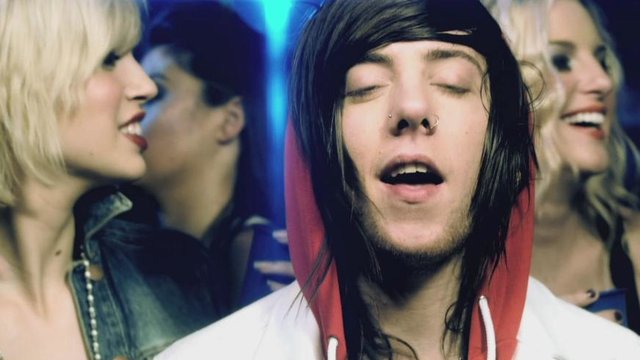 Lauren Sanford, director of jazz, lyrical and contemporary at Image Studio of Dance in Washington, incorporates Graham-style contractions into her warm-up so her students can feel the relationship between breath and movement. She also has them lie on the floor, take deep, slow breaths and imagine that they are sending that breath to different parts of their bodies. This can help dancers think of breathing as an action that involves the whole body, not just the chest and lungs.
Lauren Sanford, director of jazz, lyrical and contemporary at Image Studio of Dance in Washington, incorporates Graham-style contractions into her warm-up so her students can feel the relationship between breath and movement. She also has them lie on the floor, take deep, slow breaths and imagine that they are sending that breath to different parts of their bodies. This can help dancers think of breathing as an action that involves the whole body, not just the chest and lungs.
Bai suggests dancers take yoga to work on breath control. “Yoga makes you consciously focus on your breath, and eventually that becomes a pattern you can find when you’re dancing,” she says. Similarly, New York City–based Lindy Fines, artistic director of GREYZONE and certified Pilates instructor, finds that Pilates’ focus on coordinating breath with every movement can help dancers breathe fully and use inhales and exhales to facilitate specific types of movement.
Time It Strategically
In fast phrases like petit allegro, you may have to breath during transitions.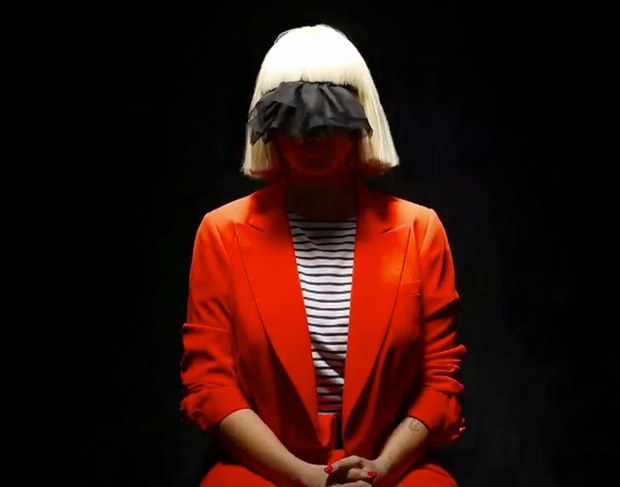 Photo via Pixabay
Photo via PixabayEven with plenty of practice, difficult or unfamiliar choreography may leave you struggling to integrate breath. If this is the case, try choosing specific points in a phrase where you will breathe. “When you’re doing an adagio, port de bras or waltz, there are places to inhale and elongate,” says Bai. “It’s harder in fast phrases. In those situations, transitions are where you can find your breath.”
Get Comfortable with Panting
Try running or other cardio activities to build endurance. Photo by Bruno Nascimento via Unsplash Dancing will sometimes make you out of breath. Rather than fighting this, learn to work with it. Don’t try to cover up the fact that you are breathing heavily, says Skaggs; it only makes it more difficult to recover and bring in more oxygen. “Dancers have to learn to breathe deeply and continue without collapsing. If you’re calm about it, you can go further,” she says. She recommends training with activities like running, biking and swimming to get accustomed to breathing heavily and build your cardiorespiratory endurance.
Punctuate Your Movement
Use breath to help elongate your extension. Photo by Matthew Murphy for Dance TeacherUsing intentional, audible breaths can also be an aesthetic choice. “Breath adds dynamics and texture to your dancing. It can help you feel the difference between rough and smooth, staccato and sustained,” says Sanford. Try using breath to accent a sharp movement, or to elongate an extension.
When you’re dancing familiar choreography, you can insert these intentional breaths spontaneously to see how they might change your execution of the phrase. You can also choreograph breath, but be careful not to overdo it. “I see a lot of excessive breathers at competitions. If you’re forcefully breathing all the time, it makes the movement look robotic,” says Sanford.
Breathe as a Group
Breathing with your fellow performers can have a powerful effect. Photo via NYCDA Being conscious of your breath is also a commonly overlooked way to connect with your fellow performers, especially in unison sections. “It’s really hard to move in exactly the same way as someone else. But if you match your breath, your initiation and follow-through will be the same,” says Sanford. “I love when I can hear a large group of dancers breathing together. It gives me goosebumps.”
“It’s really hard to move in exactly the same way as someone else. But if you match your breath, your initiation and follow-through will be the same,” says Sanford. “I love when I can hear a large group of dancers breathing together. It gives me goosebumps.”
How to start dancing right now — choreographers tell
T
“It's easier to find yourself in dancing”.
How to take the first step towards the fact that you like
Four professional dancer
about where to find freedom and how to stop comparing yourself with the other
Text: Aina Preston
Dasha
Michelle Beatz
Tagir Gindullin
Eva UVAROVA
Music is a universal instrument that moves the world, it is literally inscribed in our DNA. With its help, we can inspire and shape the pop culture of the present and future here and now. Music is inextricably linked with dance. Dancers feel the rhythm and are able to harmoniously complement the musical composition with movements. It is dance that gives them a powerful emotional release and helps them relax. And to feel this, it is worth taking one small risk - allowing yourself to dissolve into the music and turn off your head. How to take the first step and not be afraid to try what you are drawn to? We deal with Tommy Jeans, PRODANCES and our heroes, who found a common language with their fears and learned to express emotions through music and movements.
It is dance that gives them a powerful emotional release and helps them relax. And to feel this, it is worth taking one small risk - allowing yourself to dissolve into the music and turn off your head. How to take the first step and not be afraid to try what you are drawn to? We deal with Tommy Jeans, PRODANCES and our heroes, who found a common language with their fears and learned to express emotions through music and movements.
DASHA ROLIK
DASHA ROLIK
Choice between directions
I consider myself a versatile artist, doing several types of dance, but most of all I am known for the Vogue culture. This is not just a dance style, but a whole culture about protecting the rights of sexual minorities. This culture is very daring: here and now you can look whatever you like - fully comply with fantasies, externally and internally, carry yourself proudly, inventing new images. Vogue is a great occasion to dress up, surprise, delight. Exactly 10 years I have been developing in this direction, and it does not bother me, I constantly learn new things.
Exactly 10 years I have been developing in this direction, and it does not bother me, I constantly learn new things.
Synergy of dance and music
Good composition inspires dance. First came the music, then came the dance. But it also happens that a dance is born in silence, without sounds: when you have the right mood and a visualization of movements is born in your head. But this comes with experience. Of course, dance and music are closely related.
An alternative to dancing
Now, in parallel with dancing, I am developing as a director, producer and co-organizer of dance events, doing photography and video. Therefore, it seems that if it were not for the dance, then my activity would be connected with the organization of cultural events. I like to create, develop and bring something new, inspire myself and others, reveal people, come up with new ideas. I also love to cook, so I could be a great cook.
How the image begins
I focus on my mood, how I look: I can be in different weights, with different colors and lengths of hair. Trends play an important role here. Of course, first of all, I start from my expectations and how I want to look. I try not to repeat myself, to be different. I ask myself what kind of makeup I want: bright, aggressive, calm, romantic, defiant. Do I want to be sexy or conservative. This is how I collect the image. I take things from my own wardrobe or turn to stylists, ateliers, sometimes I can rent something from showrooms. Creating an image is always very interesting, it helps to show creativity.
Trends play an important role here. Of course, first of all, I start from my expectations and how I want to look. I try not to repeat myself, to be different. I ask myself what kind of makeup I want: bright, aggressive, calm, romantic, defiant. Do I want to be sexy or conservative. This is how I collect the image. I take things from my own wardrobe or turn to stylists, ateliers, sometimes I can rent something from showrooms. Creating an image is always very interesting, it helps to show creativity.
Uniqueness - awareness
Comparison does not give us anything, it takes energy and strength that can be spent on developing and multiplying potential. The uniqueness must really be realized, each person defines himself. Sometimes you need to think about what you want. As soon as you realize your own value, then claims to yourself will disappear. You can’t compare your beginning of the path with someone else’s middle.
Finding yourself
It is not worth holding on to people and things, no matter how selfish it may sound.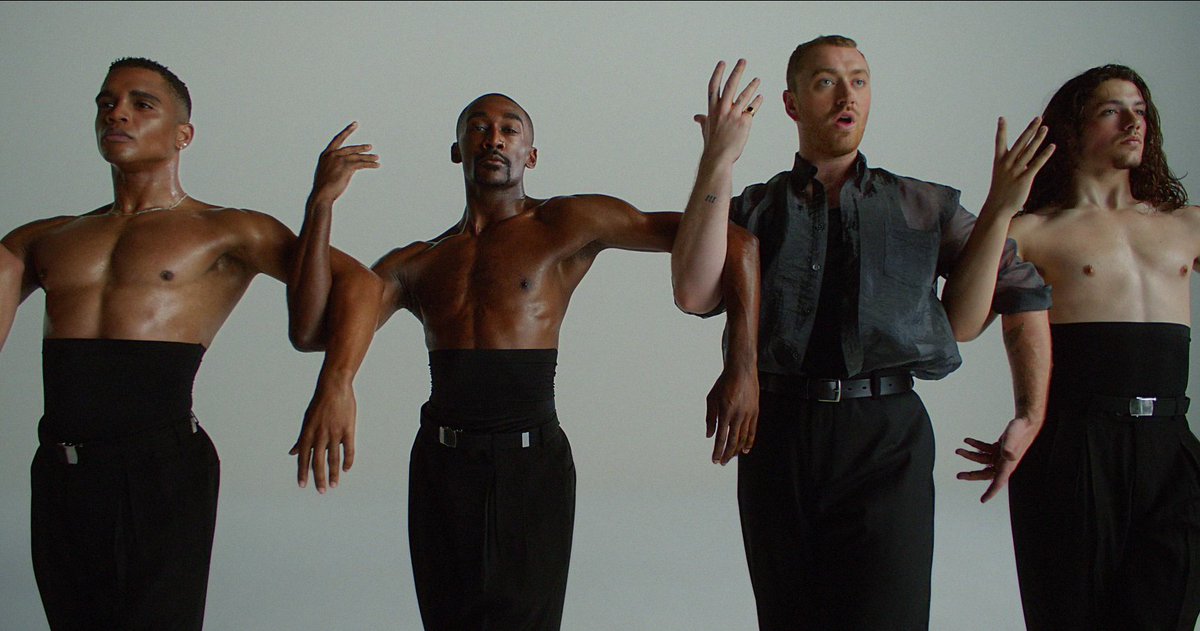 Then you will understand what you like, and what is imposed by society. When looking for your own business, it is important to start from inner feelings, focus on those very “butterflies in the stomach”.
Then you will understand what you like, and what is imposed by society. When looking for your own business, it is important to start from inner feelings, focus on those very “butterflies in the stomach”.
Philosophy of dance
Dance is body language. I dreamed of being a presenter, but oratory is difficult for me, it’s easier for me not to speak, but to dance. When I hear music, I breathe, the body emits vibrations, vibrations are reflected in the plasticity of forms, in movements, emotions. Dancing helps to develop personality. It's a unique way of expressing yourself. Sometimes words are not needed to understand us.
MICHELLE BEATZ
MICHELLE BEATZ
Sports and creativity
My dancing journey began 10-12 years ago. I quit playing professional football, where I got seriously injured, burned out emotionally and physically, and could not walk normally. A friend called me to support him at a dance performance, where I saw how people can control and feel their body, I missed this in football. I think dance and football are similar: football also has a pace, a rhythm, it's a dance with a ball. But the structure is different, football is a sport, and dance is creativity.
I think dance and football are similar: football also has a pace, a rhythm, it's a dance with a ball. But the structure is different, football is a sport, and dance is creativity.
The right music
I'm looking for music on streaming services. Usually I think about which track is more suitable for a performance, I put on performers who meet the requirements, and I look for a suitable track. Everything is pretty simple.
WHEN THERE IS NO INSPIRATION
Usually at such moments I get distracted: I review some large-scale shows, performances of stars, listen to music. There is another way - to abstract. If everything is tired, you need to give yourself time to relax, switch to another activity. You can cook food, watch a movie. Taking a break from what you do all the time can provide inspiration and motivation.
Dance clothes
Clothes are one of the main attributes of dance. It gives character to movements, creates mood. I love to dance in jeans, voluminous t-shirts. It is very important for dancers that we ourselves like how we look, this sets the tone for the performance.
I love to dance in jeans, voluminous t-shirts. It is very important for dancers that we ourselves like how we look, this sets the tone for the performance.
Comparing is okay
When you're at the start, it's okay to compare yourself to others. Helps you understand what you are missing. But then it is better to focus on your own feelings. Everyone has their own style, physiology and musicality, you just need to work on technique. When people follow someone, try to copy, it only leads them astray.
Tune TO
Friendship with Tommy Jeans
The first project with Tommy Jeans was something very unusual for me. I got to know the brand better, learned a lot of new things, despite the fact that I have been wearing their clothes for a long time. The collaboration was a pleasant surprise. The emotions are very cool, I hope that in the future we will be friends and work with Tommy Jeans.
MY JEANS
TAGIR GINDULLIN
TAGIR GINDULLIN
The main thing is to continue
I have been dancing for 16 years and I never once thought of quitting. In 2012, I broke my arm, and after the operation there was practically no rehabilitation period - two weeks later I was already in the gym. For some time he danced only on his feet, with his hand bandaged, and two months later he already participated in the championship. With apprehension, of course, but he participated. The main thing here is to continue.
In 2012, I broke my arm, and after the operation there was practically no rehabilitation period - two weeks later I was already in the gym. For some time he danced only on his feet, with his hand bandaged, and two months later he already participated in the championship. With apprehension, of course, but he participated. The main thing here is to continue.
Hobby can become a profession
I have been dancing since I was 10 years old, but in childhood I did not realize what and why I was doing, did not set big goals. Some results began to appear in the first years of training. At the age of 14, I went to live in Moscow, without parents, then the realization came that dancing could become my life's work. This transition of a hobby into a profession happened very smoothly and organically, but it could not be otherwise.
Music is paramount
When it comes to performing, music is very important. If the audience likes the composition, then my solo will definitely be remembered. It is also important for me how my body and soul respond to the track. At competitions, the DJ is responsible for the music, the dancers do not know what they will perform under. This is freestyle, improvisation, connection with the composition. If you fall into a musical "pit" during a battle - this is the most difficult moment, you need the right settings. In general, music is paramount. If the dance has a great soundtrack, then there are more chances to show your maximum.
It is also important for me how my body and soul respond to the track. At competitions, the DJ is responsible for the music, the dancers do not know what they will perform under. This is freestyle, improvisation, connection with the composition. If you fall into a musical "pit" during a battle - this is the most difficult moment, you need the right settings. In general, music is paramount. If the dance has a great soundtrack, then there are more chances to show your maximum.
Clothing as a guide
I wear what I feel comfortable and easy to move in. I perform mainly in sports things. In breakdancing, style is very important. I always separate things: for everyday life, training, competitions, festivals. Each separate occasion requires a corresponding image.
Metamorphoses in a career
At the very beginning of the journey, it was not difficult at all: there were no obligations, deadlines, projects. I remember that in my childhood a bank was built next to my house and tiles were laid - I was happy just because I could spin on this tile. Now it is more difficult - more responsibility. You begin to treat your body differently, study yourself, fill bumps. For example, there is such an element of air twist (power rotational movement in breakdance), all my life I did it intuitively, and only after 10 years I realized that there is a technique that you just need to master.
Now it is more difficult - more responsibility. You begin to treat your body differently, study yourself, fill bumps. For example, there is such an element of air twist (power rotational movement in breakdance), all my life I did it intuitively, and only after 10 years I realized that there is a technique that you just need to master.
The excitement hasn't gone away
I've competed in championships in over 30 countries, performed on big stages, acted in TV projects, but the excitement hasn't gone away. At small events, it is a little less, but at the World Cup, where legends look at you, this feeling pervades the body. I use it to my advantage - as soon as I take a step, I release adrenaline and accelerate.
Everyone is unique
We are all special, no two people are the same. Uniqueness is not something to strive for, it is already in everyone. You need to be able to feel yourself and your needs, to do what you really like. Working on oneself and realizing one's potential is what makes a person himself.
Working on oneself and realizing one's potential is what makes a person himself.
Eva Uvarova
Eva Uvarova
restrictions and freedom
since childhood I have been engaged in gymnastics (until the video with my VOG was scattered on the Internet) and today I understand - both sports and dancing require a full return. In addition, they become part of your life, which brings you a storm of emotions. The main difference is that in sports you are limited, you adhere to discipline, and in dancing you are free, open to new things. It is easier to find yourself in dancing.
Dancing is an opportunity
A professional dance career has opened up many opportunities. Thanks to dancing, I met interesting people - sport would hardly have given me such a chance. The people who appeared in my life incredibly support and inspire me, it helps to develop. I was able to visit different countries, see what other dancers are capable of.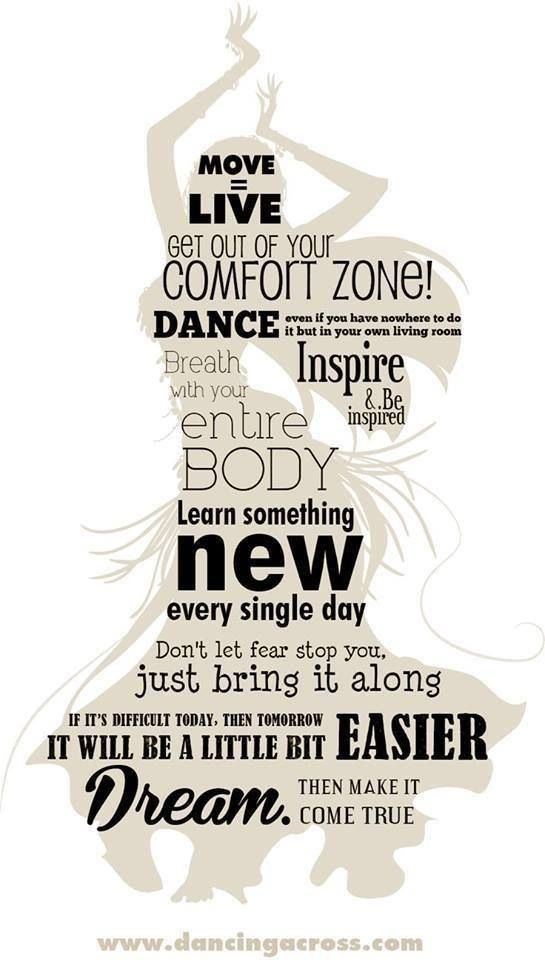 I also starred in music videos, collaborated with major brands, for example, in October I participated in the Tommy Jeans x PRODANCE project for the first time. Then I was able to show my dance to a large audience and proved to myself that I can achieve a lot. I have long liked the Tommy Jeans brand, and the opportunity to work together made me very happy.
I also starred in music videos, collaborated with major brands, for example, in October I participated in the Tommy Jeans x PRODANCE project for the first time. Then I was able to show my dance to a large audience and proved to myself that I can achieve a lot. I have long liked the Tommy Jeans brand, and the opportunity to work together made me very happy.
Style is a mix
Honestly, I can't describe my dancing style in one word. I tried many directions, most of all contemporary or modern dance resonates with me. The plasticity and technique of this style are very close to me, I like the sensations during movements. To summarize, my dance style is a mix of different directions, improvisation, taking into account different dance experiences.
Motivation and willpower
Willpower helps to achieve goals. I make decisions and start working and giving my best. If you really do what you love, then no additional motivation is needed. What you love doesn't require much effort.
Clothes are a reflection of yourself
Clothes help complete the dance. If I go to hip-hop, then I choose voluminous things. I associate this style with freedom, so clothes should not hinder movement. If I go vogue, I choose tight-fitting clothes that emphasize the curves of the body and help me feel more confident.
Music guides
Place of music in dance
Normally dancers choose music first. With the help of the body, we try to convey the lyrics of the song, the mood. I first look for a track, and then I select a choreography that describes the melody, words and feelings.
onward
Comparison is a fine line
By comparing, we evaluate ourselves, and this affects our confidence, general condition and desire to move on. Comparison sometimes helps you identify your strengths and weaknesses, but most people tend to look for flaws in themselves, so more often it is quite destructive and interferes with the implementation of plans. There is a fine line here: if a person is able to objectively evaluate his own and other people's abilities, then the comparison is acceptable, but if not, it is better not to even start.
There is a fine line here: if a person is able to objectively evaluate his own and other people's abilities, then the comparison is acceptable, but if not, it is better not to even start.
Become part of the community
Tommy Jeans Global Brand Initiative supports talented people who are disrupting the existing order for positive change.
Right now @tommyjeans is becoming a content platform where everyone can get creative and take the first step towards their dreams.
For example, take part in a competition and get the opportunity to win an online course, during which you will be supported by choreographers in a private chat. There will also be prizes from Tommy Jeans and PRODANCES.
WHAT TO DO?
Post your story on Instagram about why you want to dance. It can be a short video with a story, a dance, or a photo with text. The main condition is to mark three accounts: @tommyjeans, @tancy.pro, @theblueprint.ru.
On March 23, we will choose the 50 most inspiring stories, and their authors will receive prizes and the opportunity to completely change their lives.
Learn more about Tommy Jeans X PRODANCE
Tommy Jeans supports those who want to express themselves in a new way, discover new talents and emphasize their own uniqueness. Look for the brand's classics and the new spring collection in branded stores in Moscow:
Metropolis shopping center
2nd floor
European shopping center
3rd floor, atrium Berlin
Aviapark shopping center
1st FLOOR, OPENING 20 MAGINA "width":1200,"column_width":86,"columns_n":12,"gutter":15,"line":15}false7671300falsetruetrue[object Object]{"mode":"page","transition_type":"slide ","transition_direction":"horizontal","transition_look":"belt","slides_form":{}}{"css":".editor {font-family: tautz; font-size: 16px; font-weight: 400; line-height: 21px;}"}
The legend of dance and its god, Makhmud Esambaev: "My beloved Jewish mother"
Makhmud Esambaev was the first artist of the USSR who performed with his solo program and gathered dances from the peoples of the world in one concert.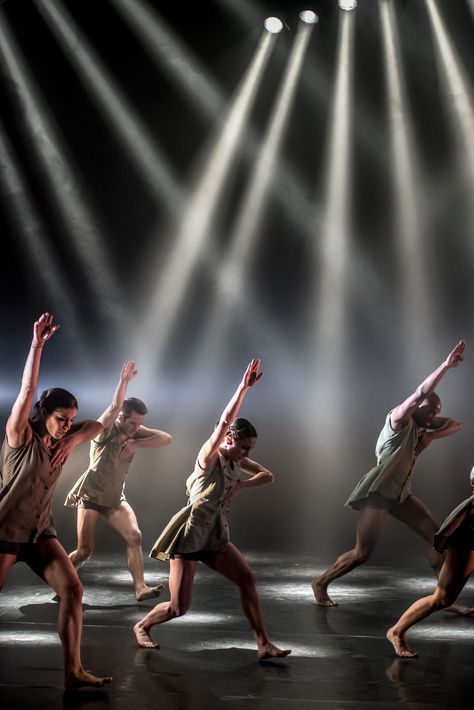 About his work, he said: “Dance is life. I breathe through dance. Lungs do not count.” He is a rare nugget, a fairy-tale prince, one of a kind, unique and unrepeatable. Such masters of dance as Galina Ulanova and Igor Moiseev bowed before him.
About his work, he said: “Dance is life. I breathe through dance. Lungs do not count.” He is a rare nugget, a fairy-tale prince, one of a kind, unique and unrepeatable. Such masters of dance as Galina Ulanova and Igor Moiseev bowed before him.
The god of dance, the legend of world choreography, the great son of the Caucasus, he liked to repeat: "I have a pair of wings - Chechnya and Russia." And he became a citizen of the whole world, devoting his fate to serving beauty and selfless help to the people. And his stepmother played a huge role in his development, whom the dancer himself always considered his second, his Jewish mother, who replaced the boy not only as a mother, but became a true friend, a guardian angel.
My father is a Chechen and my mother is a Chechen. My father lived to be 106 years old and married 11 times.
By his second marriage, he married a Jewess, Sofya Mikhailovna from Odessa. I always call her and only her mom. She called me Moishe.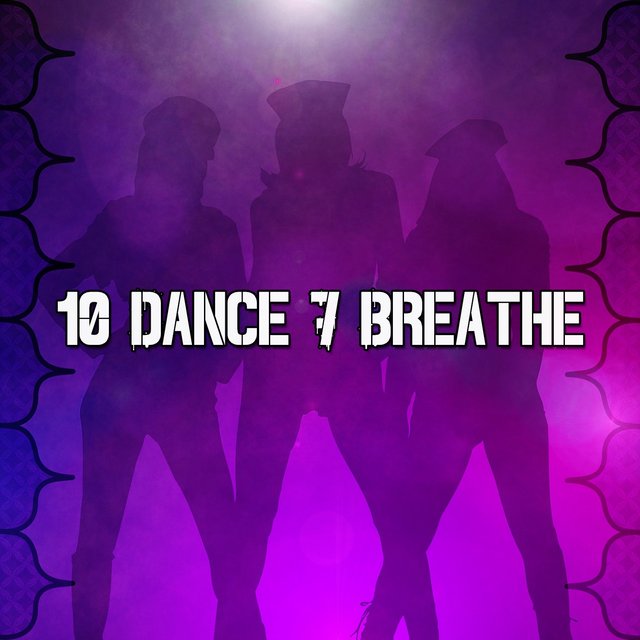
“Moishe,” she said, “I went into exile only because of you. I feel sorry for you.
This is when all Chechens were resettled in Central Asia. We lived in Frunze. I spent all my days with the boys in the yard.
- Moishe! she shouted. - Go here.
- What, mother?
- Come here, I'll tell you why you're so thin. Because you never see the bottom of the plate. Go eat your soup until the end. And then you will go.
- Moisha has a good mixture, - they said in the yard, - mother is a Jew, father is a Nazi.
Exiled Chechens were considered fascists there. Mom didn’t eat herself, but gave everything to me. She went to visit her acquaintances from Odessa, Fira Markovna, Maya Isaakovna - they lived richer than us - and brought me a piece of strudel or something else.
- Moishe, this is for you.
- Mom, have you eaten?
- I don't want to.
I began to lead a circle at the meat processing plant, taught ballroom and western dances. For this I received a bag of horse bones. Mom tore off pieces of meat from them and made cutlets in half with bread, and the bones went to the broth. At night, I threw the bones away from home so that they would not know that they were ours. She knew how to cook a delicious dinner out of nothing. When I started earning a lot, she cooked chicken necks, tsimes, she cooked herring in such a way that one could go crazy. My friends at the Kyrgyz Opera and Ballet Theater still remember: “Misha! How your mother fed us all!”
Mom tore off pieces of meat from them and made cutlets in half with bread, and the bones went to the broth. At night, I threw the bones away from home so that they would not know that they were ours. She knew how to cook a delicious dinner out of nothing. When I started earning a lot, she cooked chicken necks, tsimes, she cooked herring in such a way that one could go crazy. My friends at the Kyrgyz Opera and Ballet Theater still remember: “Misha! How your mother fed us all!”
But at first we were very poor. Mom said: “Tomorrow we are going to the wedding to Melameds. There we eat gefilte fish, goose greaves. We don't have this at home. Just don't be shy, eat more."
***
I already danced well and sang Varnechkes. It was my mother's favorite song. She listened to it like the anthem of the Soviet Union. And she loved Tamara Khanum because she sang Varnechkes.
Mom used to say: “At the wedding you will be asked to dance. Dance, then rest, then sing. When you sing, don't move your neck. You are not a giraffe. Don't look at everyone. Stand against me and sing for your mother, the rest will listen."
You are not a giraffe. Don't look at everyone. Stand against me and sing for your mother, the rest will listen."
I saw the rabbi, the bride and groom under the chuppah at the wedding. Then everyone sat down at the table. Music played and shmantsy dances began. Mom said: "Now Moishe will dance." I danced five or six times. Then she said: “Moishe, now sing.” I stood up against her and began: “You are dumb men, woo dumb men, woo dumb men? ..” Mom said: “See what a talent it is!” And they said to her: “Thank you, Sofya Mikhailovna, that you raised one Jewish boy correctly. Others, like Russians, don't know anything in Jewish.
***
She was my stepmother and a gypsy. She taught me to guess, to steal in the market. I was very good at stealing. She said: "Zhidenok, come here, we will sing."
***
I was accepted into the troupe of the Kyrgyz Opera and Ballet Theatre. Mom attended all my performances.
Mom asked me:
- Moishe, tell me: are Russians a people?
- Yes, mother.
— Are the Spaniards also a people?
- People, mother.
- And the Indians?
- Yes.
— Are the Jews not a people?
- Why, mom, people too.
- And if these are the people, then why don't you dance the Jewish dance? In "Eugene Onegin" you dance a Russian dance, in "Lakma" you dance a Hindu dance.
- Mom, who will show me the Jewish dance?
- I'll show you.
She was very heavy, probably weighed 150 kilograms.
- How will you show?
- By hand.
— And with your feet?
- You can figure it out yourself.
She hummed and showed me "Freylekhs", it is also called "Seven Forty". At 7.40 a train departed from Odessa to Chisinau. And everyone was dancing at the station. I read Sholom Aleichem and made myself the dance "A Junger Schneider". The costume was made, as it were, from scraps of material that remain with the tailor. The trousers are short, the back is made of a different material. I beat it all in the dance. This dance has become an encore for me. For an encore, I repeated it three or four times.
For an encore, I repeated it three or four times.
Mom said, “Baby, do you think I want you to dance a Jewish dance because I'm Jewish? No. Jews will talk about you: have you seen him do the Brazilian dance? Or Spanish dance? They won't talk about Jewish. But they will love you for the Jewish dance."
In Belarusian cities, in those years when Jewish art was not very encouraged, Jewish spectators asked me: "How did you get a Jewish dance?" I answered: "I allowed myself."
Mom had her own place in the theater. They said: "Misha's mother is sitting here." Mom asks me:
- Moishe, you dance the best, you get the most applause, why do everyone wear flowers, but you don't?
- Mom, - I say, - we have no relatives.
— Isn't that what the people wear?
- No. Relatives.
***
Then I come home. We had one room, an iron bed stood against the door. I see my mother with her head under the bed and joking about something. I say:
- Mom, get out immediately, I'll get what you need.
“Moishe,” she says from under the bed. - I see your legs, so, make it so that I don't see them. Come out.
***
I went away, but I saw everything. She pulled out a sack, took out a darned old felt boot from it, from it a rag, in the rag was a wad of money tied with twine.
- Mom, - I say, - where do we get such money from?
- Son, I collected it so that you don't have to run around and look for something to bury mommy. Okay, bury and so.
In the evening I dance in "Raymond" by Abdurakhman. In the first act, I fly onto the stage in a chic cape, in gold, in a turban. Raymonda plays the lute. We meet eyes. We look at each other in fascination. There is a curtain. I haven't actually danced yet, I just jumped onto the stage. After the first act, the administrator gives me a luxurious bouquet. The flowers were handed over to the administrator and told whom to give. After the second act, they give me a bouquet again. After the third one too. I already understood that all this is mommy. The play ran in four acts. This means that after the fourth there will be flowers. I gave all three bouquets to the administrator and asked in the final to give me four at once. He did just that. They said in the theater: think, Esambaev was thrown with flowers.
The play ran in four acts. This means that after the fourth there will be flowers. I gave all three bouquets to the administrator and asked in the final to give me four at once. He did just that. They said in the theater: think, Esambaev was thrown with flowers.
The next day, mommy removed the withered flowers, it turned out three bouquets, then two, then one. Then she bought flowers again.
Once my mother fell ill and was in bed. And they give me flowers. I bring flowers home and say:
- Mom, why did you get up? You need to lie down.
"Moishe," she says. - I didn't get up. I can not get up.
— Where are the flowers from?
- People realized that you deserve flowers. Now they wear it to you.
I became the leading theater artist in Kyrgyzstan and received all the awards there. I love Kyrgyzstan like my Motherland. I was treated there like a native person.
Shortly before Stalin's death, my mother learned from her friend Esfir Markovna that the deportation of all Jews was being prepared.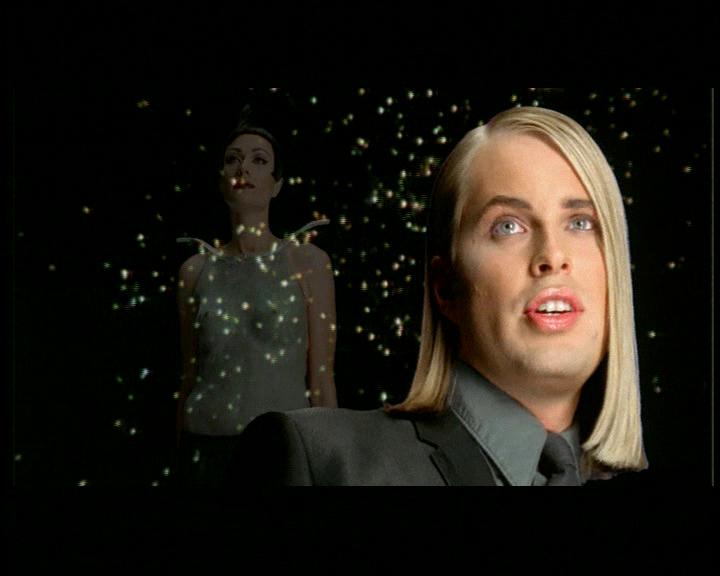 She came home and said to me:
She came home and said to me:
- Well, Moishe, how the Chechens sent us here, how the Jews deport us even further. Barracks are already being built there.
- Mom, - I say, - you and I have already learned how to ride. Wherever they send us, we will go there, the main thing is for us to be together. I will not leave you.
When Stalin died, she said: "Now it will be better."
When I married Nina, I cannot say that a friendship arose between her and my mother.
I started teaching dance at the Ministry of Internal Affairs School, money appeared. I bought my mother a gold watch with a chain, and I bought Nina a white metal watch.
***
The wife says:
- You bought your mother with a gold chain instead of buying them for me, I am young, and my mother could have worn simple ones.
- Nina, - I say, - Shame on you. What good did mom see in this life? Let her at least be glad that she has such a watch.
***
They stopped talking, but they never quarreled with each other. Only once, when Nina, having swept the floor, came out with garbage, mother said: “By the way, Moishe, you could marry better.” This is the only thing she said about her.
Only once, when Nina, having swept the floor, came out with garbage, mother said: “By the way, Moishe, you could marry better.” This is the only thing she said about her.
My daughter was born. Mom took her in her arms, put her between her big breasts, caressed her. The daughter loved her grandmother very much. Then Nina and her mother figured it out on their own. And my mother says to me: “Moishe, I’m looking after Nina, she’s still not bad. And the fact that you did not marry Pachman's daughter is also good, she is spoiled. She wouldn’t be able to do everything for you.” She and Nina began to live together.
The father has already changed several wives during this time. He lived not far from us. Mom says: “Moishe, your father brought a new nikewa. Go take a look." I walked.
- Mom, - I say, - she's so scary!
- So he needs it.
She died when she was 91 years old. It happened like this. She had a sister, Mira. She lived in Vilnius. She came to us in Frunze.




